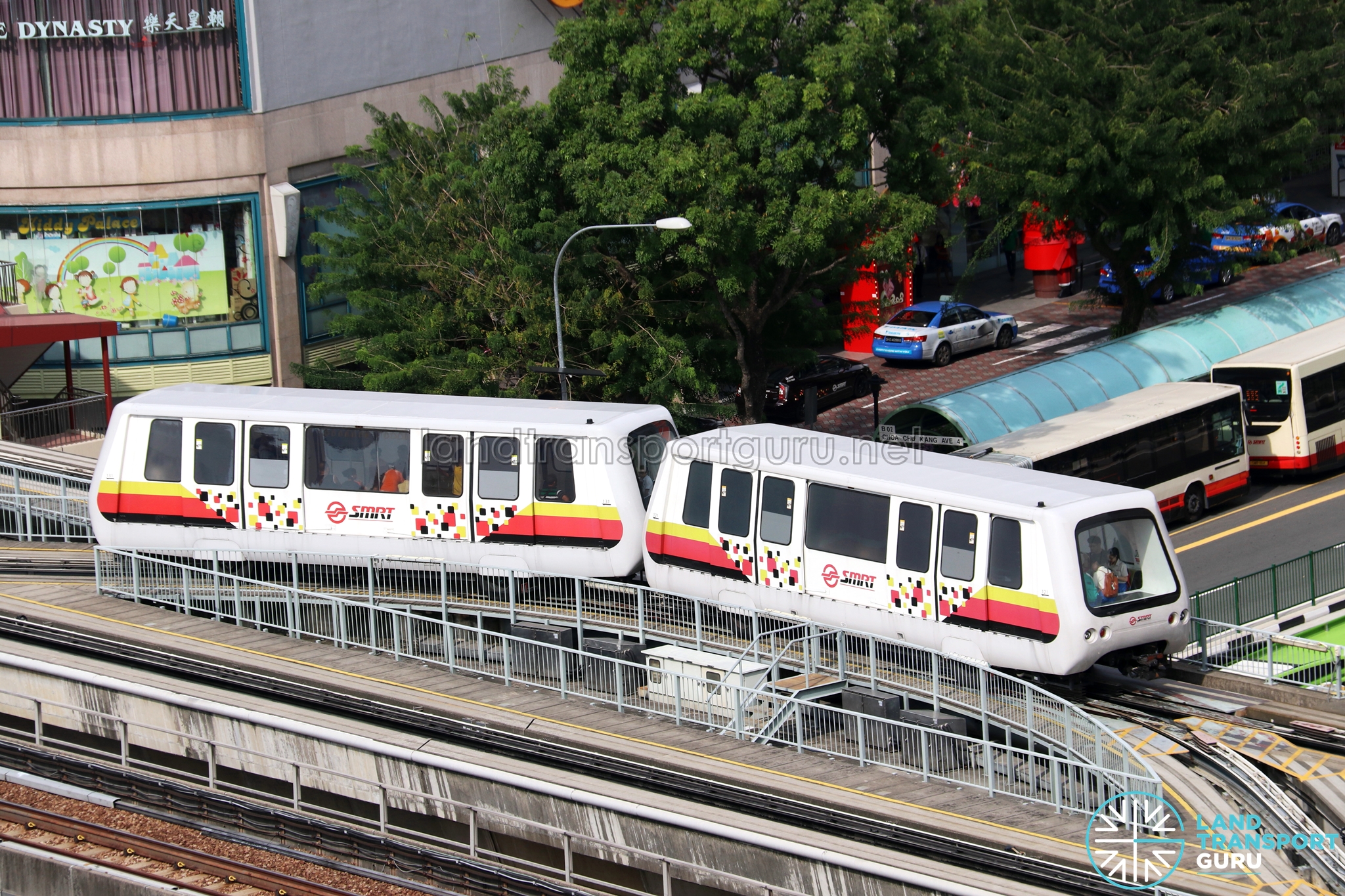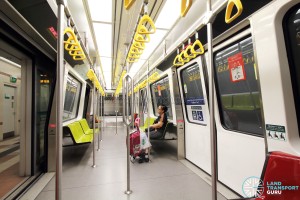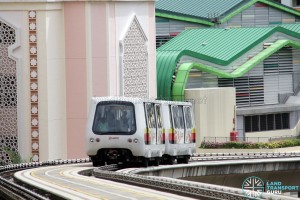| Bombardier Innovia APM100 (C801A) | |
 |
|
| In service | November 2014 – Present |
| Manufacturer | Bombardier Transportation |
| Constructed | 2014 – 2015 |
| Number built | 13 Vehicles (13 trainsets) |
| Formation | 1 motor car per trainset |
| Fleet number | 120 – 132 |
| Operators | SMRT Trains |
| Depot(s) | Ten Mile Junction |
| Line(s) served | Bukit Panjang LRT Line |
| Technical Data | |
| Car body | Aluminium |
| Doors | 4 per car |
| Electrification | 600V AC power rail |
| Track gauge | Central guideway with rubber tyres |
The Bombardier Innovia APM 100 (C801A) is a rubber-tyred automated people mover train operating on the Bukit Panjang LRT (BPLRT), also referred to as a Light Rail vehicle (LRV) Entering service in 2014, these were the second generation of rolling stock for the BPLRT, and are capable of operating in single and double car formations.
Thirteen trains were procured and were manufactured from 2014 to 2015 by Bombardier Transportation in Pittsburgh, Pennsylvania. The additional trains increased the capacity of the line by about 50%, enabling more double-car operations throughout the line.
All trains will be upgraded with the Bombardier CITYFLO 650 Communications-based train control (CBTC) signalling system as part of BPLRT reliability enhancement works.
Background
Contract 801A (C801A) for the procurement of rolling stock called for 13 single-car trains to increase the capacity of the Bukit Panjang LRT. The driverless Light Rail Transit (LRT) line extended the reach of the MRT network into the housing estates, running on its dedicated grade-separated guideway. Trains are capable of operating as a single car, or coupled together for double car operations. They are also rubber-tyred for minimized operating noise within built-up areas.
The trains were built as part of Bombardier’s INNOVIA family of APM trains. They are guided by a central guideway and draw power from a 600V AC power rail embedded within the guideway. Operating on Bombardier Transportation’s CITYFLO 550 signalling system, these trains are fully automated (ATO GoA 4) and do not require an attendant on board.
History
The first trains entered revenue service on 19 November 2014, just over 15 years since the full opening of the Bukit Panjang LRT.
In 2015, cameras were installed on the under-frame of train cars to better monitor the alignment and contact between the train’s current collector shoes and power rails. These would also be used to detect the causes of any misalignments, so that appropriate preventive measures can be taken.
Current Design
The exterior of C801A trains are based on SMRT’s new pixel livery, and are painted in a white, with yellow, red and black bands on the sides. Large viewing windows on all sides offer a panoramic view of the surrounding estates. Smart glass is used for the side-facing windows, which turn translucent within 6 metres of residential buildings.
All C801A trains have four wide-opening doors, two on each side. The interior features longitudinal seating in a lime green colour scheme and priority seats are distinguished in red. At the ends of every car, an equipment housing offers a flat platform for additional seating. Trains were also fitted with a Travel Information Display, which are LED text displays located above every door.
In an emergency, the doors can be opened for passengers to evacuate onto the guideway. Within the cabin, Intercom Units and Emergency Next Station Stop buttons enabling passengers to speak with staff or stop the train at the next station in an emergency.
Train Formation
Trains can be formed of either one car, or two cars coupled together. They are not cross-coupled with C801 trains. Every car is identified by a three digit number ranging from 120 to 132, i.e. Car 120, Car 121 and so on to Car 132. All sets were built by Bombardier Transportation.
Future Upgrades
As part of the Asset Replacement and Reliability Enhancement Works for Bukit Panjang Light Rapid Transit contract awarded to Bombardier (Singapore) Pte Ltd, all 15 C801A trains will be upgraded with the new Communications-based train control (CBTC) signalling system.
In 2019, two trains (Set 128 and 131) were removed from service and sent to Bombardier in Canada for the retrofitting of the new signalling system. The trains returned to Singapore in April 2021 and returned to revenue service on 29 July 2023. The remaining 11 trainsets would likely be retrofitted locally.
Gallery:
External Links & References
Back to Trains












